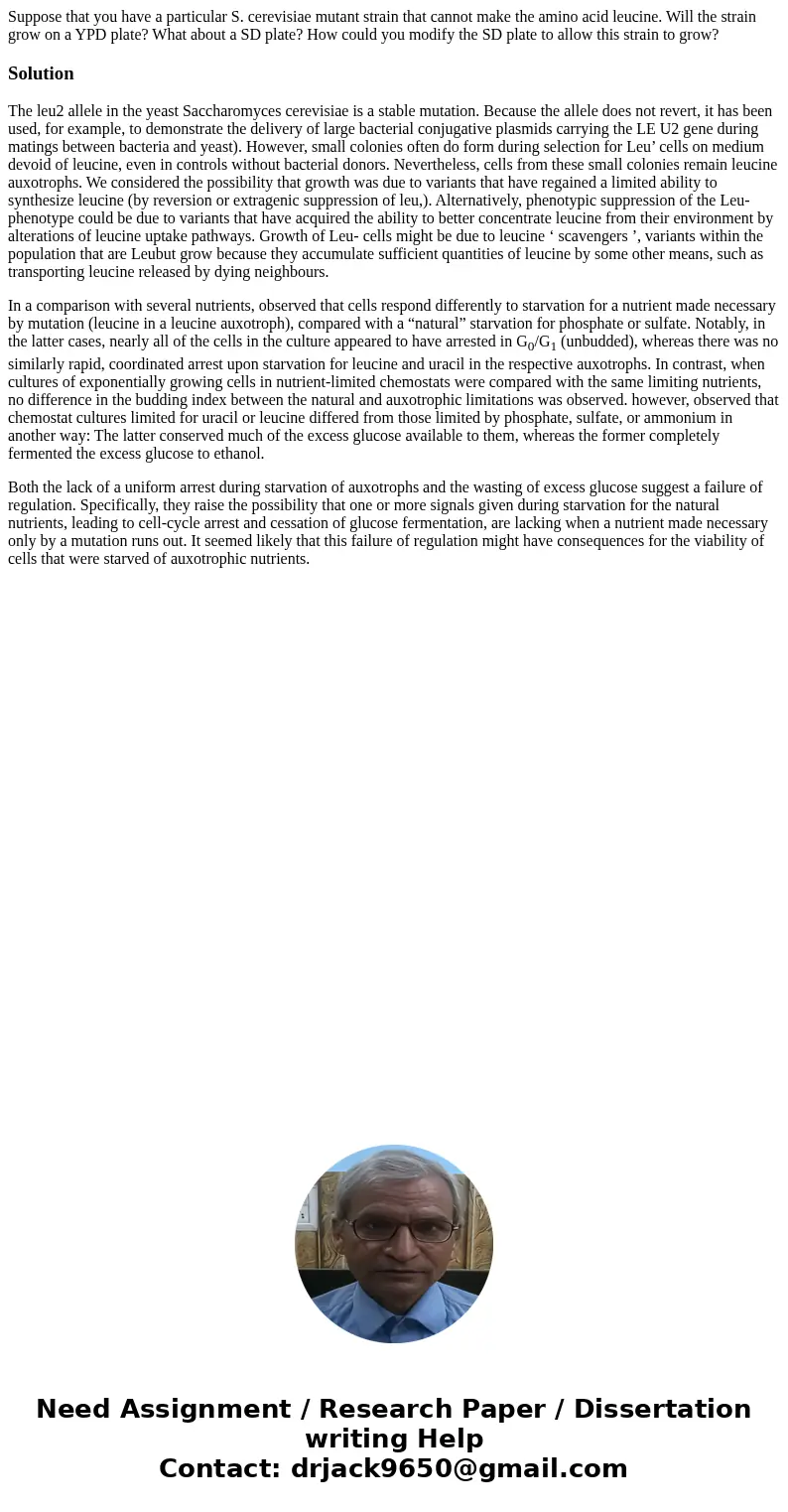Suppose that you have a particular S cerevisiae mutant strai
Suppose that you have a particular S. cerevisiae mutant strain that cannot make the amino acid leucine. Will the strain grow on a YPD plate? What about a SD plate? How could you modify the SD plate to allow this strain to grow?
Solution
The leu2 allele in the yeast Saccharomyces cerevisiae is a stable mutation. Because the allele does not revert, it has been used, for example, to demonstrate the delivery of large bacterial conjugative plasmids carrying the LE U2 gene during matings between bacteria and yeast). However, small colonies often do form during selection for Leu’ cells on medium devoid of leucine, even in controls without bacterial donors. Nevertheless, cells from these small colonies remain leucine auxotrophs. We considered the possibility that growth was due to variants that have regained a limited ability to synthesize leucine (by reversion or extragenic suppression of leu,). Alternatively, phenotypic suppression of the Leu- phenotype could be due to variants that have acquired the ability to better concentrate leucine from their environment by alterations of leucine uptake pathways. Growth of Leu- cells might be due to leucine ‘ scavengers ’, variants within the population that are Leubut grow because they accumulate sufficient quantities of leucine by some other means, such as transporting leucine released by dying neighbours.
In a comparison with several nutrients, observed that cells respond differently to starvation for a nutrient made necessary by mutation (leucine in a leucine auxotroph), compared with a “natural” starvation for phosphate or sulfate. Notably, in the latter cases, nearly all of the cells in the culture appeared to have arrested in G0/G1 (unbudded), whereas there was no similarly rapid, coordinated arrest upon starvation for leucine and uracil in the respective auxotrophs. In contrast, when cultures of exponentially growing cells in nutrient-limited chemostats were compared with the same limiting nutrients, no difference in the budding index between the natural and auxotrophic limitations was observed. however, observed that chemostat cultures limited for uracil or leucine differed from those limited by phosphate, sulfate, or ammonium in another way: The latter conserved much of the excess glucose available to them, whereas the former completely fermented the excess glucose to ethanol.
Both the lack of a uniform arrest during starvation of auxotrophs and the wasting of excess glucose suggest a failure of regulation. Specifically, they raise the possibility that one or more signals given during starvation for the natural nutrients, leading to cell-cycle arrest and cessation of glucose fermentation, are lacking when a nutrient made necessary only by a mutation runs out. It seemed likely that this failure of regulation might have consequences for the viability of cells that were starved of auxotrophic nutrients.

 Homework Sourse
Homework Sourse